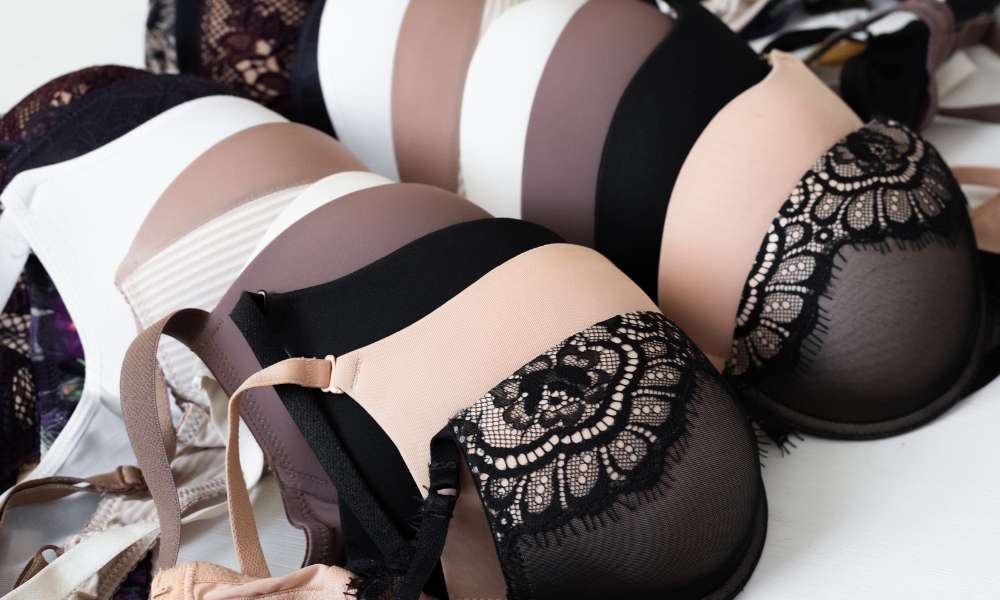Women's Sheer Lingerie: A Practical Guide to Fabrics, Fit, Styling, and Care
Sheer lingerie combines delicate aesthetics with functional design, offering a versatile addition to any wardrobe. Understanding the fabrics, fit considerations, styling options, and proper care techniques ensures these pieces remain comfortable, flattering, and long-lasting. This guide explores the practical aspects of selecting, wearing, and maintaining sheer lingerie, from fabric properties to ethical purchasing decisions.

Sheer lingerie has evolved from purely intimate wear to versatile wardrobe staples that blend comfort with style. Whether seeking everyday pieces or special occasion items, understanding the nuances of sheer fabrics, proper fit, styling techniques, and maintenance practices helps maximize both satisfaction and longevity. This guide provides practical insights into making informed choices about sheer lingerie.
Sheer Fabrics Explained: Types, Properties, and When to Choose Them
Sheer fabrics vary significantly in texture, transparency, durability, and comfort. Common materials include mesh, tulle, lace, chiffon, and organza, each offering distinct characteristics. Mesh provides breathability and structure, making it suitable for everyday wear and supportive designs. Tulle offers a softer drape with moderate transparency, often used in decorative elements. Lace combines intricate patterns with varying opacity levels, ranging from barely-there to semi-opaque depending on the weave density.
Chiffon delivers a flowing, lightweight feel with subtle sheerness, ideal for layering and romantic designs. Organza provides crisp structure with transparency, commonly found in structured bralettes and decorative accents. Synthetic blends like nylon and polyester offer durability and easy care, while natural silk provides luxury softness with delicate handling requirements. Choose mesh or nylon blends for daily wear and active use, lace or chiffon for special occasions, and silk for luxury comfort when proper care is feasible.
Choosing the Right Fit: Sizing, Support, and Comfort for Sheer Pieces
Proper fit remains crucial for sheer lingerie, as transparency emphasizes construction and body contours. Standard sizing applies, but sheer fabrics often stretch differently than opaque materials. Check size charts carefully, noting whether brands run small or large. Many sheer pieces feature adjustable straps, hook closures, or elastic components that accommodate slight size variations.
Support levels vary widely in sheer designs. Structured pieces with underwire, boning, or reinforced bands provide lift and shaping comparable to traditional bras, while unstructured bralettes prioritize comfort over support. Consider your support needs based on activity level and personal preference. Seam placement, strap width, and band construction affect comfort significantly in sheer garments where every detail shows. Look for flat seams, soft elastic, and quality hardware that prevents irritation.
Comfort factors include fabric softness against skin, breathability, and moisture management. Natural fibers like silk and cotton blends offer superior breathability, while synthetic meshes often provide better moisture-wicking properties. Try pieces on when possible, checking for gaping, digging, or rolling that indicates poor fit.
Styling and Layering: Practical Outfit Ideas and Everyday Use
Sheer lingerie extends beyond the bedroom into everyday fashion through strategic styling. Layer sheer bralettes under blazers, cardigans, or loose-knit sweaters for subtle texture and dimension. Pair high-neck sheer bodysuits with high-waisted trousers or skirts for balanced coverage. Use sheer camisoles under sheer blouses for modesty while maintaining the translucent aesthetic.
For casual wear, combine sheer bralettes with denim jackets and jeans, allowing delicate details to peek through. In professional settings, layer sheer pieces under structured garments, ensuring appropriate coverage while adding visual interest. Evening styling might feature sheer bodysuits under slip dresses or sheer panels in formal wear for elegant detailing.
Color coordination matters with sheer pieces. Nude tones blend with skin for minimal visibility under clothing, while black, white, or bold colors make intentional fashion statements. Consider the opacity level when planning outfits, ensuring comfort with the amount of visibility in various settings.
Care and Maintenance: Washing, Drying, and Storage Best Practices
Proper care extends the lifespan of sheer lingerie significantly. Hand washing remains the gentlest method, using cool water and mild detergent specifically formulated for delicates. Submerge items, gently agitate, and rinse thoroughly without wringing or twisting. If machine washing is necessary, use mesh laundry bags, select delicate cycles with cold water, and fasten all hooks to prevent snagging.
Avoid harsh detergents, bleach, and fabric softeners that degrade delicate fibers. Never put sheer lingerie in the dryer, as heat damages elastic and distorts shapes. Instead, press excess water out gently with a towel, then lay flat or hang to air dry away from direct sunlight and heat sources.
Storage practices prevent damage and maintain shape. Fold bralettes and soft pieces flat in drawers, or hang items with padded hangers to preserve structure. Keep pieces separated to prevent snagging from hooks or embellishments. Store in cool, dry locations away from moisture and direct light that can cause discoloration or fabric degradation.
Quality, Materials, and Ethical Considerations: Durability and Sustainable Options
Quality indicators in sheer lingerie include fabric consistency, seam construction, hardware durability, and finishing details. High-quality pieces feature even fabric weaves without thin spots, reinforced stress points, smooth seams, and secure hardware. Investment in quality items often proves more economical long-term through extended wear life.
Sustainable options increasingly include organic cotton, recycled synthetics, and ethically sourced silk. Brands emphasizing fair labor practices, transparent supply chains, and environmentally responsible production methods provide ethical alternatives. Look for certifications like OEKO-TEX, GOTS (Global Organic Textile Standard), or Fair Trade indicators.
Durability varies by material and construction. Well-made synthetic blends often outlast natural fibers in frequent-wear scenarios, while silk provides luxury that requires gentle care. Consider cost per wear when evaluating purchases, balancing initial investment against expected longevity. Repairing minor damage like loose threads or separated seams extends garment life and reduces waste.
Sheer lingerie offers versatility, comfort, and style when selected and maintained thoughtfully. Understanding fabric properties guides appropriate choices for different occasions and needs. Proper fit ensures comfort and flattering appearance, while strategic styling integrates these pieces into everyday wardrobes. Careful maintenance preserves quality and extends wear life, and ethical purchasing decisions support responsible production practices. With these practical considerations, sheer lingerie becomes a functional and enjoyable wardrobe component.




